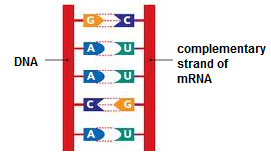Messenger RNA- Explained

Messenger RNA is the type of RNA that is needed for protein synthesis.
In this article, we will describe how the cells in your body make proteins from start to finish, so that you can know the process of protein
synthesis
you the individual and vital role of messenger RNA (mRNA) plays in this process.
So How Does Your Body Produce Protein?
How does the body produce protein? We'll go over this now.
The body produces protein at a cellular level. Each cell in the body is equipped with all the organelles
which are needed to synthesis protein. The end organelle that makes protein are the ribosomes. But before it gets to the
ribosomes, which makes the complete end product of protein, the process begins in the nucleus of the cell.
The Nucleus Contains the Genes Needed to Make Protein
The process begins in the nucleus of the cell, because the nucleus contains the genes, which contains the information needed to make functional proteins.
The process of going from gene to protein consists of two major steps, which are transcription and translation. The flow
of information from DNA to RNA to proteins is so important to biology that it is referred to many times as the central dogma
of molecular biology.
Transcription
Transcription is the process by which information from the gene's DNA in the nucleus
is transferred to a similar molecule
called RNA. The type of RNA that contains information for protein synthesis is called messenger RNA. You can think of it
as a messenger, because it carries the information, from the DNA in the nucleus to the ribosomes in the cytoplasm. Again,
transcription is the process by which the messenger RNA is created, which will travel to the ribosomes, and deliver the vital message from the genes
needed to make protein.
Translation
The next step after transcription is translation. This is the step where the mRNA comes into contact with the ribsomes, which reads the sequence of mRNA bases. A section of the mRNA consisting of a sequence of 3 bases is called a codon, which normally codes for a single amino acid. Proteins are long strings of amino acids put together. A type of RNA, then, called transfer RNA (abbreviated tRNA), assembles the protein, one amino acid at a time (or 3 bases at a time). It does this until it encounters a "stop" codon. This tells it to stop putting chains of amino acids together. The building of the protein is now complete. Thus, it will stop.
Below is an illustration of a messenger RNA being synthesized into a protein.

So this is how the process of protein synthesis works.
